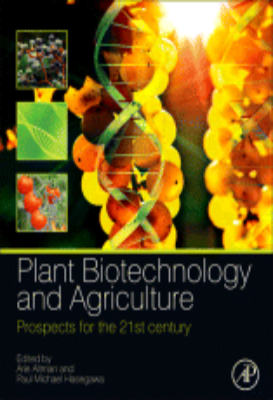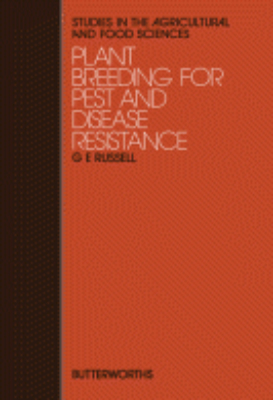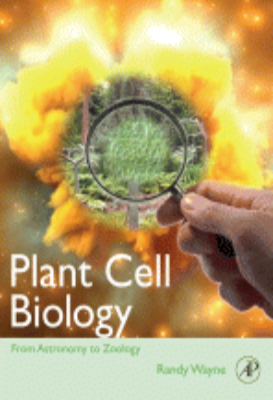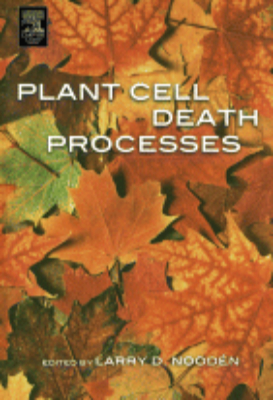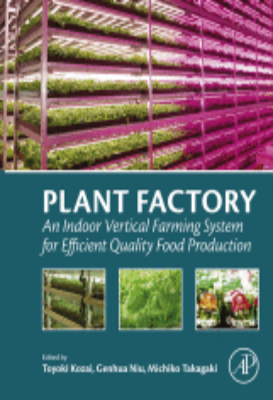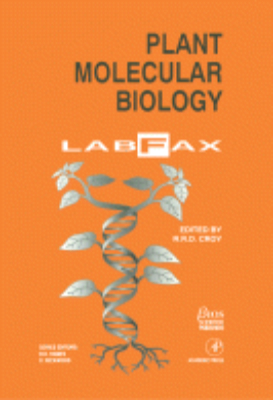ebooks
Plant Biosystematics
Plant Biosystematics is a compendium of papers from a symposium titled "Plant Biosystematics: Forty Years Later" held in Montreal in July 1983. This collection reviews the current field of biosystematics, particularly the evolution of natural biota, and how plant biosystematics can contribute to the welfare of humans. One paper reviews biosystematics, compares new approaches, and discusses the latest trend in comparative, molecular evolution of genes. One author discusses the cytology and biosystematics concerning the discontinuities and genetic independence occurring in the evolutionary process. Another author discusses chromosome pairing in species and hybrids that includes models of chromosome pairing in diploids. The text also describes chromosome banding and biosystematics, as well as the problems of chromosome banding that should be addressed to in future research. With estimates of the number of species being threatened with extinction numbering around 20,000 one paper address the issue of conservation and biosystematics. The author suggests that more biological information should be published to avoid duplication of effort, and possibly drive scientists to have their views more widely felt. Agriculturists, botanists, conservationists, environmentalists, and researchers in the field of botany, conservation, and plant genealogy will find this book valuable.
Plant Biotechnology and Agriculture
"As the oldest and largest human intervention in nature, the science of agriculture is one of the most intensely studied practices. From manipulation of plant gene structure to the use of plants for bioenergy, biotechnology interventions in plant and agricultural science have been rapidly developing over the past ten years with immense forward leaps on an annual basis. This book begins by laying the foundations for plant biotechnology by outlining the biological aspects including gene structure and expression, and the basic procedures in plant biotechnology of genomics, metabolomics, transcriptomics and proteomics. It then focuses on a discussion of the impacts of biotechnology on plant breeding technologies and germplasm sustainability. The role of biotechnology in the improvement of agricultural traits, production of industrial products and pharmaceuticals as well as biomaterials and biomass provide a historical perspective and a look to the future. Sections addressing intellectual property rights and sociological and food safety issues round out the holistic discussion of this important topic. Key Features. Includes specific emphasis on the inter-relationships between basic plant biotechnologies and applied agricultural applications, and the way they contribute to each other. Provides an updated review of the major plant biotechnology procedures and techniques, their impact on novel agricultural development and crop plant improvement. Takes a broad view of the topic with discussions of practices in many countries"
Plant Breeding for Pest and Disease Resistance
Studies in the Agricultural and Food Sciences: Plant Breeding for Pest and Disease Resistance presents a critical review of the development of resistant varieties of plant to pests and diseases. It discusses the economic impact of pests and diseases; the methods of controlling these pests and diseases; and the challenges being faced by a plant breeder. Some of the topics covered in the book are the general principles and methods of breeding for resistance; importance of parasite variability to the plant breeder; methods of testing for resistance; requirements for successful inoculation; production of resistant varieties; and economic importance of fungal diseases; and variability in fungal pathogen. Pathogenic fungi and fungal diseases are also covered. The control of fungal diseases by resistant varieties is discussed. An in-depth analysis of diseases in plants is provided. The characteristics of bacteria and bacterial diseases are also presented. A chapter is devoted to epidemiology of diseases associated with mycoplasma-like organisms and rickettsia-like organisms. The book can provide useful information to farmers, botanists, students, and researchers.
Plant Breeding in New Zealand
Plant Breeding in New Zealand is a collection of papers that covers selecting and breeding of crops, pastures, fruits, timbers, and soil conservation plants in New Zealand. The book is divided into four parts, which are dealing with cropping, horticulture, forestry and soil conservation, and pasture. The text first covers crop plants such as wheat, barley, and potatoes. The next part deals with horticulture produce, such as apples, berries, and citrus. Next, the book discusses forestry, soil conservation, and genetic techniques in plant improvement. The last part talks about the plants used in pastures, which include white and red clover, lucerne, and lotus and other legumes. The book will be of great use to botanists, agriculturists, and horticulturists who wish to be aware of the plant selection and breeding methods used in New Zealand.
Plant Cell Biology
"Plant Cell Biology is a semester long course for undergraduates and graduate students which integrates mathematics and physics, two years of chemistry, genetics, biochemistry and evolution disciplines. Having taught this course for over ten years, the author uses his expertise to relate the background established in plant anatomy, plant physiology, plant growth and development, plant taxonomy, plant biochemistry, and plant molecular biology courses to plant cell biology. This integration attempts to break down the barrier so plant cell biology is seen as an entre into higher science.Distinguishing this book from papers that are often used for teaching the subject which use a single plant to demonstrate the techniques of molecular biology, this book covers all aspects of plant cell biology without emphasizing any one plant, organelle, molecule, or technique. Although most examples are biased towards plants, basic similarities between all living eukaryotic cells (animal and plant) are recognized and used to best illustrate for students cell processes. Key Features. Thoroughly explains the physiological underpinnings of biological processes to bring original insight related to plants. Includes examples throughout from physics, chemistry, geology, and biology to bring understanding to plant cell development, growth, chemistry and diseases. Provides the essential tools for students to be able to evaluate and assess the mechanisms involved in cell growth, chromosome motion, membrane trafficking, and energy exchange. Companion Web site provides support for all plant cell biology courses"
Plant Cell Death Processes
Programmed cell death is a common pattern of growth and development in both animals and plants. However, programmed cell death and related processes are not as generally recognized as central to plant growth. This is changing fast and is becoming more of a focus of intensive research. This edited work will bring under one cover recent reviews of programmed cell death, apoptosis and senescence. Key Features Summaries of the myriad aspects of cell death in plants Discussion of the broadest implications of these disparite results A unification of fields where there has been no cross talk Enables easy entry into diverse but related lines of research
Plant Cell Organelles
Plant Cell Organelles contains the proceedings of the Phytochemical Group Symposium held in London on April 10-12, 1967. Contributors explore most of the ideas concerning the structure, biochemistry, and function of the nuclei, chloroplasts, mitochondria, vacuoles, and other organelles of plant cells. This book is organized into 13 chapters and begins with an overview of the enzymology of plant cell organelles and the localization of enzymes using cytochemical techniques. The text then discusses the structure of the nuclear envelope, chromosomes, and nucleolus, along with chromosome sequestration and replication. The next chapters focus on the structure and function of the mitochondria of higher plant cells, biogenesis in yeast, carbon pathways, and energy transfer function. The book also considers the chloroplast, the endoplasmic reticulum, the Golgi bodies, and the microtubules. The final chapters discuss protein synthesis in cell organelles; polysomes in plant tissues; and lysosomes and spherosomes in plant cells. This book is a valuable source of information for postgraduate workers, although much of the material could be used in undergraduate courses.
Plant Diseases
Plant Diseases: Epidemics and Control provides a description of the methods of epidemiological analysis based on infection rates and the relation between the amount of inoculum and the amount of disease it produces. The book shows how to study the increase of pathogen populations and the epidemiological strategy to be adopted to control the epidemic of plant diseases. The text covers the calculation of the logarithmic increase of disease; use of epidemiology in the study of control; forms of sanitation; the use of resistant plant varieties; and the design of field experiments. Plant pathologists and breeders, agriculturists, horticulturists, research workers, teachers, and students will find the text invaluable.
Plant Diseases and Vectors: Ecology and Epidemiology
Plant Diseases and Vectors: Ecology and Epidemiology is the fourth in a five-volume series of books on vectors of plant disease agents. It is comprised of 10 chapters representing the expertise of 13 outstanding scientists from a total of seven different countries. This book begins with a discussion on the ecological involvement of wild plants in plant virus pathosystems. This is followed by the principles and applications of enzyme-linked immunosorbent assay (ELISA) in diagnosing plant viruses and monitoring their movement in the environment. The next two chapters detail the epidemiologies of diseases caused by leafhopper-borne viruses, mollicutes, and rickettsia-like organisms. This book also covers the developments in understanding the importance of helper agents to the transmission ecologies of many aphid-borne plant viruses. It also encompasses the factors that can contribute to the epidemiology and control of a disease affecting a major agricultural crop of the world. A vector of plant viruses not covered in earlier volumes of the series (the host plant, itself) and the man-made epidemiological hazards in major crops of developing countries are also described. This volume will broaden the knowledge of transmission ecology and disease epidemiology, not only by serving as a valuable supplemental textbook, reference work, and bibliographical source, but also by catalyzing novel syntheses of thinking and stimulating further research in the area.
Plant Disturbance Ecology
"The media coverage of natural disasters (hurricanes, fires, floods, ice storms, etc.) indicates the prevalence of natural disasters in most, if not all, ecosystems. In order for scientists to study, understand, and ultimately predict how these disturbances affect ecosystems, it is necessary for them to know more about the physical processes involved in these disturbances and to learn how to couple these processes to the ecological systems. Essential for all ecologists, forest researchers, and conservation biologists, this book includes chapters on the disturbance processes, how the disturbance causes necrosis or death to individuals, and their effects on population or community processes. In Plant Disturbance Ecology, physical scientists who study disturbances provide an introduction to the physical disturbance processes, while ecologists relate this information to the way the vegetation responds to the disturbances. This reference is also key for all researchers hydrology, geomorphology, and environmental management. Key Features. Includes coverage on six different disturbance processes: Wind, Gravity, Geomorphic, Hydrologic, Combustion, and Biotic. Provides a clear explanation of how some of the physical processes of disturbance affect plant ecological processes. Offers ecologists an up-to-date understanding of the physical processes and allows them to predict future affects of disturbances. Unites two related fields by linking the disturbance processes and ecological responses. Presents physical scientists with ideas of how they might usefully apply their knowledge to advance understanding of ecological systems"
Plant Energetics
"Emphasizing the physical and technological aspects of plant energetics, this comprehensive book covers a significant interdisciplinary research area for a broad range of investigators. Plant Energetics presentsthe thermodynamics of energy processes in plants, their interconnection and arrangement, and the estimation of intrinsic energy needs of the plant connected with performing various physiological functions. The book also demonstrates the role of electrical and electrochemical processes in the plants life cycle. Plant Energetics incorporates such diverse themes as thermodynamics, biophysics, and bioelectrochemistry with applications in horticulture and ecology. It also discusses the roles and mechanisms of both quantum and thermophysical processes of theconversion of solar energy by plants, including photosynthesis and long distance transport. Comprehensive details of value to basic and applied researchers dealing with photosynthesis, agriculture, horticulture, bioenergetics, biophysics, photobiology, and plant physiology make Plant Energetics an informative, one-stop resource that willsave time and energy in your search for the latest information. Key Features. Plant Energetics incorporates such diverse themes as thermodynamics, biophysics, and bioelectrochemistry with applications in horticulture and ecology. It also discusses the roles and mechanisms of both quantum and thermophysical processes of the conversion of solar energy by plants, including photosynthesis and long-distance transport. Extensive details of value to basic and applied researchers dealing with photosynthesis, agriculture, horticulture, bioenergetics, biophysics, photobiology, and plant physiology make Plant Energetics an informative, one-stop resource that will save you time and energy in your search for the latest information"
Plant Factory
Plant Factory: An Indoor Vertical Farming System for Efficient Quality Food Production provides information on a field that is helping to offset the threats that unusual weather and shortages of land and natural resources bring to the food supply. As alternative options are needed to ensure adequate and efficient production of food, this book represents the only available resource to take a practical approach to the planning, design, and implementation of plant factory (PF) practices to yield food crops. The PF systems described in this book are based on a plant production system with artificial (electric) lights and include case studies providing lessons learned and best practices from both industrial and crop specific programs. With insights into the economics as well as the science of PF programs, this book is ideal for those in academic as well as industrial settings.
Plant Geography
Plant Geography: With Special Reference to North America covers main concepts of the two major approaches to plant geography, namely, the floristic plant geography and the ecologic plant geography. Floristic plant geography primarily studies evolutionary divergence, migration, and decline of taxa, as influenced by past events of the earths history. Ecologic plant geography is an alternative approach to plant geography, which takes plant communities as units having ranges to be interpreted, dominated by sociologic and physiologic, rather than phylogenetic and historic considerations. Under the floristic plant geography part, topics covered include interrelations among floristic plant geography, taxonomy, and geology; the relation between plant dissemination and migration; evidence of the dynamic character of plant ranges; and migratory route. After a brief introduction to the evolution of North and South America vegetation, the book discusses the ecologic plant geography section that focuses on various vegetation regions in North America, including Tundra, subarctic-subalpine forest, temperate mesophytic, xerophytic forest, and chaparral and steppe regions and temperate affinity forests in Middle America. Other regions examined include the desert and marine regions, as well as the microphyllous woodland, tropical savanna, rain forest, and tropical alpine. With great information on geologic history of each vegetation unit and paleontology, this book will be helpful to paleobotanists, historical geologists, and taxonomists.
Plant Growth and Development
This book provides current information on synthesis of plant hormones, how their concentrations are regulated, and how they modulate various plant processes. It details how plants sense and tolerate such factors as drought, salinity, and cold temperature, factors that limit plant productivity on earth. It also explains how plants sense two other environmental signals, light and gravity, and modify their developmental patterns in response to those signals. This book takes the reader from basic concepts to the most up-to-date thinking on these topics. Key Features @bul:* Provides clear synthesis and review of hormonal and environmental regulation of plant growth and development* Contains more than 600 illustrations supplementary information on techniques and/or related topics of interest* Single-authored text provides uniformity of presentation and integration of the subject matter* References listed alphabetically in each section
Plant Improvement and Somatic Cell Genetics
Plant Improvement and Somatic Cell Genetics includes all but one of the papers presented at two symposia held during the XIII International Botanical Congress in Sydney, Australia, on August 21-28, 1981. ""Frontiers in Plant Breeding"" and ""Cell Culture and Somatic Cell Genetics in Plant Biology"" highlight the ways in which plant breeding techniques can improve crops. The book explores the potentials as well as the limitations of plant breeding, and cellular and molecular techniques in plant improvement. Comprised of 14 chapters, this volume begins with an overview of the potential applications of exotic germplasm for tomato and cereal crop improvement. It continues with a discussion of multiline breeding, breeding of crop plants that can tolerate soil stresses, combining genomes by means of conventional methods, use of embryo culture in interspecific hybridization, use of haploids in plant improvement, and somaclonal variation and somatic hybridization as new techniques for plant improvement. The reader is also introduced to plant cell culture, as well as somatic cell genetics of cereals and grasses, somatic cell fusion for inducing cytoplasmic exchange, uses of cell culture mutants, genetic transformation of plant cells by experimental procedures in the context of plant genetic engineering, and use of molecular biology techniques for recognition and modification of crop plant genotypes. This book will be a useful resource for scientists and plant breeders interested in applying somatic cell genetics for crop improvement.
Plant Metabolism
Plant Metabolism, Second Edition focuses on the processes, principles, and methodologies involved in the metabolism of higher plants. The book first elaborates on cell structure and function, enzymes, and catabolism. Discussions focus on the control of respiration, conservation of the energy liberated in respiration, chemical pathways of respiration, enzymes in the living cell, prosthetic groups and coenzymes, protein nature of enzymes, general structure of plant cells, and osmotic behavior of cells. The manuscript then tackles anabolism and secondary plant products. Topics include phenylpropanoids, flavonoids, isoprenoid compounds, assimilation of nitrogen and sulfur, synthesis of sucrose and polysaccharides, location of the photosynthetic apparatus, influence of external factors on the rate of photosynthesis, and general nature of photosynthesis. The text takes a look at growth and differentiation, absorption, secretion, and translocation, secondary plant products, and regulation of metabolism. The publication is a valuable source of data for plant science experts and researchers interested in plant metabolism.
Plant Molecular Biology Labfax
LABFAX volumes are purpose-designed data reference books for practicing scientists. Each book presents key information for a major subject in one place and so saves hours of searching. It does not simply collect together data which are already available in catalogs, since these are often incomplete and can contain conflicting information. Rather, the authors and editors of each LABFAX volume have searched the original literature for the accurate data which they know the specialist needs. Plant Molecular Biology Labfax is a detailed compendium of essential information on plant nucleic acids, transformation and expression vectors, selectable genes and reporter genes, gene expression and PCR techniques, etc. A key feature is the Plant Gene Index, comprising comprehensive tables of plant genes published and submitted to sequence databases. Plant Molecular Biology Labfax, while specializing in molecular aspects of plant science, inevitably has numerous sections dealing with general molecular biology which complement the extensive information provided in Molecular Biology Labfax. It is therefore a worthy companion to this text.
Plant Nonprotein Amino and Imino Acids
Plant Nonprotein Amino and Imino Acids: Biological, Biochemical, and Toxicological Properties provides a comprehensive discussion of plant nonprotein amino acids. Much of this monograph is written with the neophyte in mind, thus necessitating the presentation of certain basic concepts that are well-known to the advanced worker. Rather than providing an exhaustive coverage of the subject matter, the book attempts to represent effectively the state of the art; to provide a helpful means of identifying and locating the pertinent literature; and to present the basic information necessary to encourage other workers to enter into the study of the nonprotein amino acids. The book begins with a review of nomenclature and physicochemical properties. This is followed by a discussion of analytical methods such as partition paper chromatography, thin-layer chromatography, ninhydrin color reaction, ion-exchange chromatography, and gas chromatography. Subsequent chapters deal with the toxicity of some nonprotein amino acids and their ability to exert debilitating effects in a host of organisms; and the intermediary metabolism of nonprotein amino acids.
Plant Parasitic Nematodes
Plant Parasitic Nematodes, Volume III provides a comprehensive discussion of the different advances in plant nematology. This includes biochemical techniques to taxonomy and innovation in transmission and scanning electron microscopy technology. It explains a broadened basis for understanding nematode physiology and behavior and the sensory mechanisms that govern nematode actions and plant host-nematode interactions. The book discusses the development of modern approaches to the evaluation and reduction of crop losses. The emphasis of this volume is on plant parasites and insights gained through research on other nematodes. In particular, the book explains the anatomical, developmental, behavioral, and genetic studies on the free-living nematode Cenorhabditis elegans, which is a widely used laboratory model for examining various biological problems. The information provided by various researches on C. elegans increases our understanding about the relevance of nematodes to general biological processes in higher organisms, including man. The book is divided into 19 chapters which cover the following concepts of plant nematology: biochemistry, cytochemistry, and genetics; morphology and function; host-parasite relations; and evaluation and control of crop losses. The present volume is an excellent reference for students, lecturers, and research professionals in plant parasitology and related fields.
Plant Pathology: 1969
Plant Pathology presents information and advances in plant pathology including disease induction and development and disease resistance and control. This book is organized into two major parts encompassing 14 chapters that focus on diseases, pathogenicity, and pathogen variability. The first part of the book deals with general considerations of disease, the disease cycle, parasitism and pathogenicity, and the variability in pathogens. This is followed by a presentation of the mechanisms by which pathogens cause disease and plants resist disease. Core chapters focus on the effects of pathogen-produced enzymes, toxins, growth regulators, and polysaccharides on the structural organization and on the basic physiological processes of photosynthesis, translocation, and respiration. The chapters also discuss the defense mechanisms of the plant. Moreover, this book explains the genetics of host-parasite interaction, effects of environment on disease development, and control. The second part of the book deals with the infectious diseases caused by fungi, bacteria, parasitic higher plants, viruses, and nematodes. This part also looks into the noninfectious diseases caused by environmental factors. The diseases caused by each type of pathogen are discussed comprehensively as a group and are subsequently discussed individually in detail. This book includes diagrams of cycles for each disease to create visual images for better understanding of the disease and message retention. This book is ideal for students with introductory course in plant pathology.
Plant Pathology: 1978
Plant Pathology, Second Edition incorporates developments in identifying pathogens and disease diagnosis. This book is organized into two major parts encompassing 16 chapters that discuss general aspects of plant diseases and specific plant diseases caused by various microorganisms. This edition includes chapters or sections on diseases caused by mycoplasma-like organisms, rickettsia-like bacteria, viroids, and protozoa. Information on the genetics of plant diseases, the development of resistant varieties, and their vulnerability to new pathogen races is added in this release. It also includes information on the development of epidemics. The presentation of these topics is followed by a discussion on systemic fungicides and biological control of diseases, as well as postharvest diseases of plant products. Furthermore, this edition also explains mycotoxins and mycotoxicoses, as well as techniques of isolation, culturing, indexing, and identification of pathogens. It also studies mycorrhiza and root-nodule bacteria. Considerable chapters describe diseases caused by fungi and those caused by bacteria, which have been organized in logical, cohesive groups according to their most important symptoms. Diagrams of disease cycles, groups of pathogens and symptoms, and techniques and concepts of plant pathology are incorporated in each chapter. Moreover, this edition provides numerous photographs (macroscopic, microscopic, electron micrographs, and scanning electron micrographs) that illustrate concepts, pathogens, and symptoms. Teachers and students who are interested in plant pathology and plant diseases and control will find this book very helpful.
Plant Pathology: 1988
Plant Pathology, Third Edition, provides an introduction to the fundamental concepts of plant pathology, incorporating important new developments in the field. The present volume also follows closely the organization and format of the Second Edition. It includes two new chapters, ""Plant Disease Epidemiology"" and ""Applications of Biotechnology in Plant Pathology."" Extensively updated new information has been added about the history of plant pathology, the stages in the development of disease, the chemical weapons of attack by pathogens, and the genetics of plant disease. The book is organized into three parts. Part I discusses basic concepts such as classification of plant diseases; parasitism and disease development; how pathogens attack plants; effects of pathogens on plant physiology; plant defenses against pathogens; and genetics, epidemiology, and control of plant diseases. Part II on specific plant diseases covers diseases caused by fungi, prokaryotes, parasitic higher plants, viruses, nematodes, and flagellate protozoa. Part III deals with applications of biotechnology in plant pathology.
Plant Pathology: Volume I
Plant Pathology: An Advanced Treatise, Volume I: The Diseased Plant presents an integrated synthesis of the scope, importance, and history of plant pathology, emphasizing the concept of disease, not of diseases. The book focuses on pathological processes, defense devices, predisposition, and therapy of the diseased plant. It explores the normal pathways that are obstructed in sick plants; how the pathogen causes dysfunction; and how the host plant reacts to the pathogen. This book also considers the logistics and the strategy of disease and how to combat it. This volume is organized into 15 chapters and begins with an overview of plant pathology, its history, and its relation to other sciences, along with plant predisposition to disease, and the resistance-susceptibility problem. The next chapters examine how sickness in plants is recognized and diagnosed, the tissue breakdown in diseases, and the effects of parasites on the processes in plants. The impact of disease on water balance and respiration in plants and the histology of disease resistance in plants are also explained. This volume also covers the physiological and chemical basis of defense by higher plants against potential or invading pathogens and the hypersensitivity concept in plant pathology. The final chapter discusses the physical and chemical therapy of the diseased plant. This book will appeal to all who are interested in a theoretical treatment of plant pathology and in the broad ecological relationships among organisms, as well as to research workers and advanced students of applied biology.
Plant Pathology: Volume III
Plant Pathology: An Advanced Treatise, Volume III: The Diseased Population Epidemics and Control deals with the epidemics of the diseased population of plants and their forecasting and control. The book highlights the public health implications of plant pathology, giving major consideration to inoculum production, dispersal, and control. This volume is organized into 14 chapters and begins with an overview of populations of inoculum and the consequences of cultivation, emphasizing the inoculum potential. The next chapters focus on the autonomous dispersal of plant pathogens through the soil, seeds, or plant parts; the inoculum dispersal by animals, humans, air, and water; and the factors and processes that trigger an epidemic. The book also introduces the reader to the physical, chemical, and biological aspects of the performance of fungicides on plants and in soil, and then concludes by discussing the genetics of disease resistance and problems associated with plant breeding. This book is a valuable resource for those who are interested in a theoretical treatment of plant pathology and in the broad ecological relationships among organisms, as well as for research workers and advanced students of applied biology.
Plant Peroxisomes
Plant Peroxisomes deals with the biogenesis of plant peroxisomes and its relevance to the proposed model for peroxisome biogenesis in germinated seeds. The book is divided into seven chapters that discuss the history, cytochemistry, morphology, properties, isolation, metabolism, enzymology, and ontogeny of plant peroxisomes. The book first explains how advances in electron microscopy and cell fractionation studies have led to the detection of peroxisome. The subsequent chapters discuss the types and metabolic functions of plant peroxisomes and the cytochemical procedures for establishing the localization of specific enzymes and for analyzing peroxisome distribution in nonflowering plants, algae, and fungi. A chapter presents methods of peroxisome isolation from various tissues and the physical and chemical properties of the isolated organelles. Considerable chapters are devoted to the metabolic functions, enzymatic activities, development of their form, and biochemistry of peroxisomes. Several key enzymes of the glycolate pathway of photorespiration found in leaf peroxisomes are presented. A discussion on the physiology of plant peroxisomes is provided. This book will be of value to professional scientists and graduate students concerned with plant metabolism and development.
Plant Pests and their Control
Plant Pests and their Control, Revised Edition discusses the concepts involved in pest management, along with its application, constraints, and opportunities. This book is comprised of 13 chapters that cover topics relevant in understanding the basis and practice of pest management. The first six chapters deal with the various aspects of entomology. These chapters cover the importance of insects; the physiological properties of insects; and reproduction and life cycle. The next chapter covers the non-insect pests. Chapter 8 discusses the relationship between insects and plants, while Chapter 9 covers the mortality factors of insect, such as predators, parasites, and pathogens. The next chapter presents the ecological background of pest control. The remaining three chapters discuss pest management itself. This text will be of great use to agriculturists, horticulturalists, and pest control professionals. Household owners dealing with residential pest infestation will also find this book a great source of information.
Plant Physiology: 1969
Plant Physiology: A Treatise, Volume VB: Analysis of Growth: The Responses of Cells and Tissues in Culture deals with the innate capacities for growth that reside in mature organs, tissues, and cells of higher plants. The book examines the various ways, normal and abnormal, in which surviving organs, tissues, or cells from plants may grow, metabolize, and develop. The text will be of value to botanists, horticulturists, and biologists.
Plant Physiology: 1971
Plant Physiology: A Treatise, Volume VIA: Physiology of Development: Plants and Their Reproduction explores the various problems of development and reproduction that arise as plants, responsive to environmental stimuli, develop a vegetative plant body and produce seeds and fruits or organs of perennation. This book considers the morphological aspects of plant growth and development as well as the growth and reproduction of fungi, physiological aspects of vegetative reproduction and flowering, and perennation and dormancy. This volume is organized into four chapters and begins with an overview of growth and development, with reference to organization and patterns of development in vascular plants and the initiation and development of plants. The discussion then shifts to vegetative, sexual, and asexual reproduction in fungi, along with heterokaryosis and morphogenesis. The next chapter explores reproduction in plant biology, focusing on vegetative and sexual reproduction, sex determination, and photoperiodism. This book concludes by considering the physiological mechanisms underlying the production of organs of perennation and the establishment of dormancy. This text will be of value both to graduate students and to established investigators with specific interest in plant physiology.


